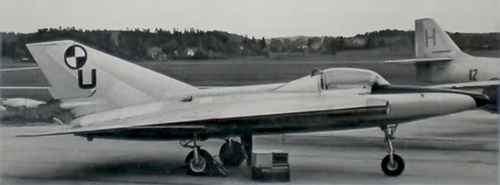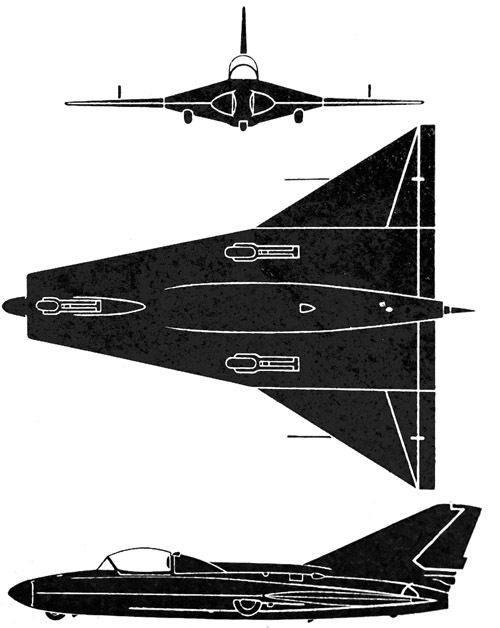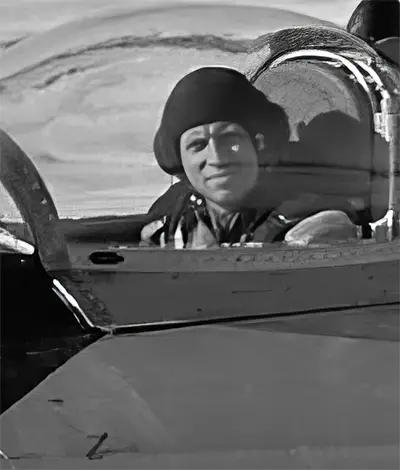Bengt Ragnar Olow a commencé le vol à voile dans sa jeunesse, puis est passé plus tard au vol moteur, où il a excellé en remportant la compétition de vol de précision l’Ångström Cup de...
Le Saab 210 Lilldraken (petit dragon) répondait un programme de chasseur supersonique à réaction lancé en 1949 par la Flygvapnet (l’aviation militaire suédoise). Les premiers essais eurent lieu avec des maquettes en bois d’environ 90 cm, propulsés par des pulso ou des statoréacteurs. Elles permirent de définir la configuration aérodynamique de l’aile en double delta.
Les résultats acquis à l’aide de ces petites maquettes furent très intéressant. Toutefois ils demeureraient limités. En juin 1950, Erik Bratt, le chef du programme de la Saab, proposa de réaliser une maquette de volante à l’échelle 7/10. Le projet fut lancé en novembre 1950, équipé d’un turboréacteur Armstrong Siddeley Adder. Un an plus tard le 7 décembre 1951, le SAAB 210 commençait ses essais de roulage.
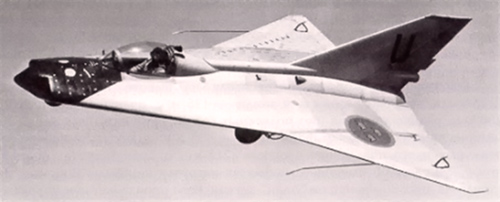
The first flight of the Saab 210 Lilldraken took place on January 21, 1952, in the hands of Saab's chief test pilot Bengt Olow.
La procédure de décollage impliquait un déjaugeage de la roulette avant à 125 km/h, puis du train principal à 180 km/h, ce qui prenait environ 900 mètres de piste.
Le taux de montée à pleine puissance atteignait 11 m/s.
Il lui fallait 4 minutes pour atteindre 4000 mètre d’altitude, altitude à laquelle la vitesse en palier était de 540 km/h.
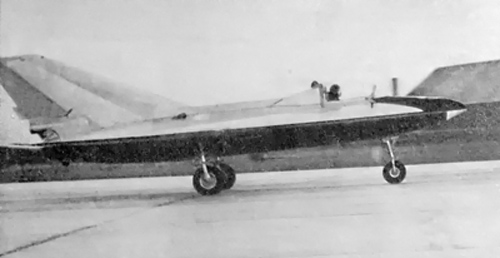
Comme on peut le voir sur la photo précédente, le train d’atterrissage ne rentrait pas entièrement. De plus, si la montée s’effectuait à l’aide d’un système hydraulique, la descente se faisait par simple gravitation.
L’atterrissage ne posait pas de difficultés bien que la visibilité sur l’avant soit extrêmement restreinte à l’arrondi, comme sur tous les appareils à voilure delta.
Des essais ont été menés avec des vitesses, au contact sol, comprises entre 250 et 150 km/h.
La distance de roulage à l’atterrissage était de 300 mètres. Elle à même pu être ramenée à 200 mètres par l’emploi d’un parachute de décélération.
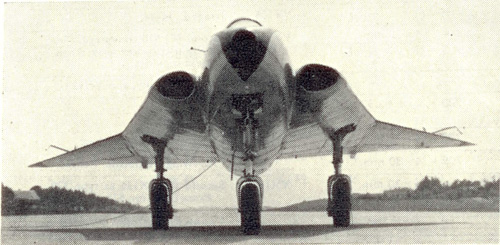
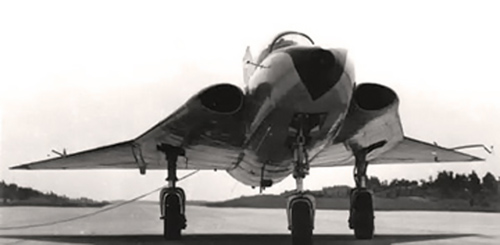

Le » petit dragon » servit à de nombreuses expérimentations aérodynamiques. Afin de corriger l’instabilité longitudinale rencontrée aux grands angles, le cône avant fut d’abord remplacer par un cône plus arrondi. Ce qui lui valut la dénomination de Saab 210 A.
Toujours dans le cadre de cette étude, il fut décidé de tester les entrées d’air à l’emplanture des ailes, comme cela était prévu sur le futur Draken. Cette configuration fur appelée Saab 210 B.
The Saab 210, dans sa version B, a été retiré du service le 25 octobre 1956, un an après le 1er vol du Draken. Il avait à son actif 887 vols et tenu l’air pendant 286 heures.
